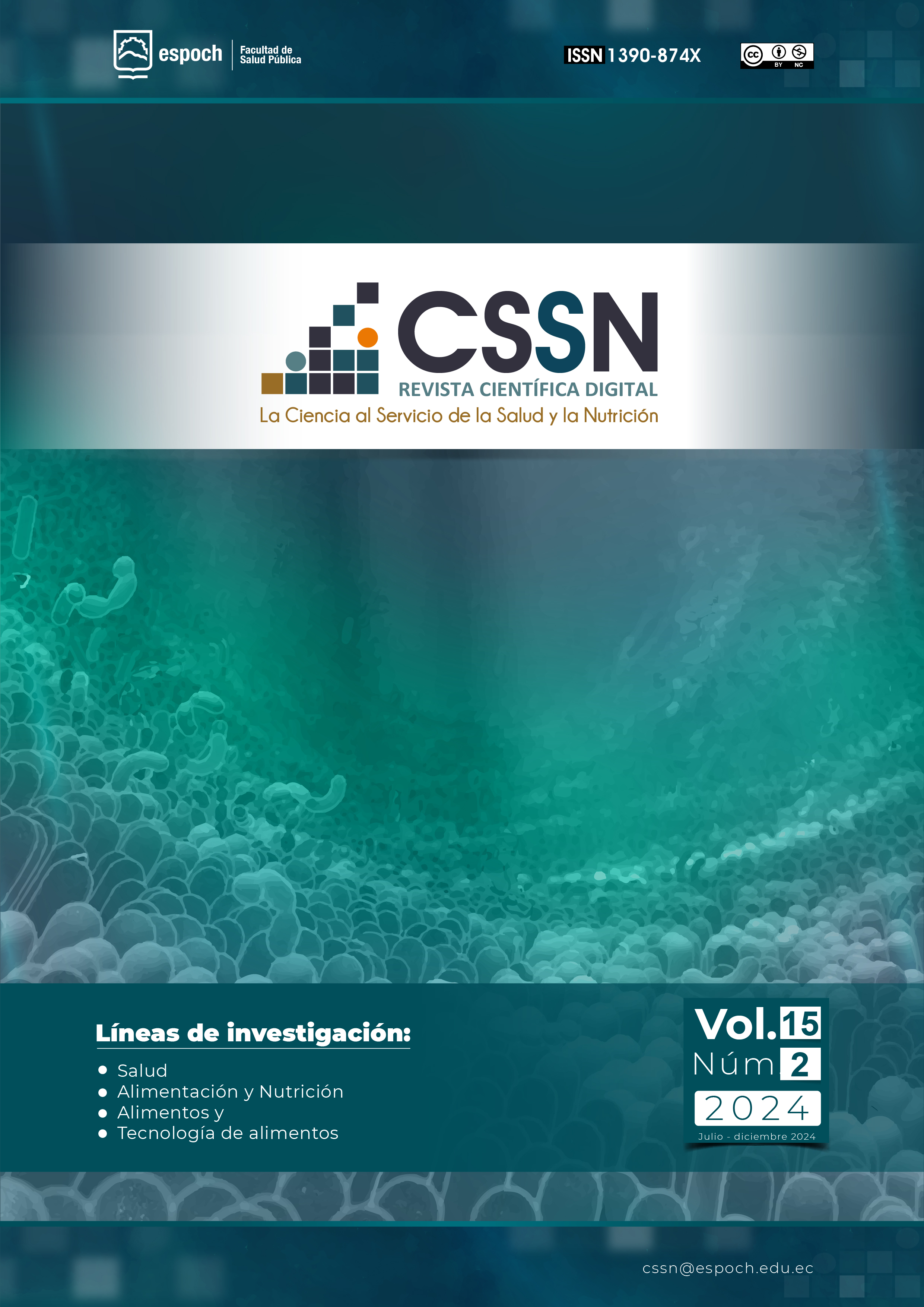BARRIERS AND FACILITATORS OF COVID-19 PRACTICES AMONG CANADIAN SINGLE MOTHERS: A QUALITATIVE STUDY
DOI:
https://doi.org/10.47187/cssn.Vol15.Iss2.350Palabras clave:
COVID-19 practices, public health behaviours, single mothers, barriers, facilitators, mask wearing, social distancing, hand washing, disinfecting surfaces, CanadaResumen
Introduction: La pandemia de COVID-19 introdujo varias prácticas de salud pública nuevas, como el uso de mascarillas, el distanciamiento social, el lavado de manos más frecuente y la desinfección de superficies. La aplicación de estas medidas preventivas podría haber afectado especialmente a las madres solteras. Objetivo: Los objetivos de este estudio cualitativo son describir las experiencias de las madres solteras canadienses con la aplicación de las prácticas COVID-19; e identificar las barreras y los facilitadores de los comportamientos clave de salud pública, el uso de mascarillas, el distanciamiento social, el lavado de manos y la desinfección de superficies. Sujetos y métodos: Doce madres solteras de entre 18 y 51 años de edad fueron reclutadas mediante muestreo intencional a partir de plataformas de medios sociales. Se realizaron entrevistas individuales utilizando una guía de entrevista semiestructurada. Luego, se transcribieron textualmente y se analizaron
cualitativamente la información utilizando el análisis temático y el enfoque de la descripción interpretativa. Resultados: Se observaron los siguientes problemas en los comportamientos de salud pública: el volumen de las mascarillas y mantener limpias las mascarillas de tela fueron barreras para el uso de mascarillas, la soledad y el cierre de los colegios fueron obstáculos para practicar el distanciamiento social, estar fuera de casa fue un obstáculo para lavarse las manos, el cansancio y la falta de tiempo fueron dificultades para desinfectar las superficies. Las madres solteras destacaron los siguientes facilitadores: los mandatos gubernamentales y los mensajes de salud pública facilitaron el uso de mascarillas, la rutina diaria y la tecnología permitieron el distanciamiento social, los tipos de jabón de manos proporcionaron el lavado de manos, el acceso a suministros y equipos de limpieza facilitó la desinfección de superficies. Además, las actitudes sociales y el estigma, las normas culturales y familiares preexistentes, el impacto de la edad de los niños y la incertidumbre relacionada con el cambio de conocimientos sobre el virus fueron cuestiones generales que afectaron a todos los comportamientos de salud pública. Conclusión: Las prácticas COVID-19 no fueron sencillas de aplicar ni de adherir para las madres solteras. Hubo una amplia gama de barreras y facilitadores que informan de la necesidad de crear sistemas de apoyo. Otros estudios deberían tener en cuenta
las cuestiones genéricas y las barreras específicas del comportamiento a la hora de evaluar las intervenciones de promoción de la salud y aplicar las políticas de salud pública COVID-19.
Descargas
Citas
Zhou M, Long P, Kong N, Campy KS. Characterizing Wuhan residents’ mask-wearing intention at early stages of the COVID-19 pandemic. Patient Education and Counseling. 2021; 104(8): 1868–77. https://doi.org/10.1016/j.pec.2020.12.020
Coroiu A, Moran C, Campbell T, Geller AC. Barriers and facilitators of adherence to social distancing recommendations during COVID-19 among a large international sample of adults. PLOS ONE. 2020; 15(10): e0239795. https://doi.org/10.1371/journal.pone.0239795
Głąbska D, Skolmowska D, Guzek D. Population-based study of the influence of the COVID-19 pandemic on hand hygiene behaviors—Polish adolescents’ COVID-19 Experience (PLACE-19) study. Sustainability. 2020; 12(12): 4930. https://doi.org/10.1111/ajt.16300
Dehghani S, Pooladi A, Nouri B, Valiee S. Barriers and facilitators of adherence to the COVID-19 prevention guidelines: A qualitative study. Caspian Journal of Health Research. 2021; 6(1): 9–20. https://doi.org/10.32598/CJHR.6.1.343.1
Chen X, Ran L, Liu Q, Hu Q, Du X, Tan X. Hand hygiene, mask-wearing behaviors and its associated factors during the COVID-19 epidemic: A cross-sectional study among primary school students in Wuhan, China. International Journal of Environmental Research and Public Health. 2020; 17(8): 2893. https://doi.org/10.3390/ijerph17082893
Haque M. Handwashing in averting infectious diseases: Relevance to COVID-19. J Popl Ther Clin Pharmacol. 2020; 27(SP1): e37–52. https://doi.org/10.15586/jptcp.v27SP1.711
Angus Reid Institute. COVID-19 Compliance: One-in-five Canadians Making Little to no Effort to Stop Coronavirus Spread (August 2020) [Internet]. [cited 22 April 22]. Available from: https://angusreid.org/covid-compliance/
Chu DK, Akl EA, Duda S, Solo K, Yaacoub S, Schünemann HJ, et al. Physical distancing, face masks, and eye protection to prevent person-to-person transmission of SARS-CoV-2 and COVID-19: a systematic review and meta-analysis. The Lancet. 2020; 395(10242): 1973–87. https://doi.org/10.1016/S0140-6736(20)31142-9
Gharpure R, Miller GF, Hunter CM, Schnall AH, Kunz J, Garcia-Williams AG. Safe use and storage of cleaners, disinfectants, and hand sanitizers: Knowledge, attitudes, and practices among U.S. Adults during the COVID-19 Pandemic. Am J Trop Med Hyg. 2021; 104(2): 496–501. https://doi.org/10.4269/ajtmh.20-1119
Sun Z, Ostrikov K (Ken). Future antiviral surfaces: Lessons from COVID-19 pandemic. Sustainable Materials and Technologies. 2020; 25: e00203. https://doi.org/10.1016/j.susmat.2020.e00203
Centers for Disease Control and Prevention. Use and Care of Masks (December 2021) [Internet]. [cited 22 April 22]. Available from: https://www.cdc.gov/coronavirus/2019-ncov/prevent-getting-sick/cloth-face-cover-guidance.html
Centers for Disease Control and Prevention. Guidance and Tips for Tribal Community Life During COVID-19 (December 2021) [Internet]. [cited 22 April 22]. Available from: https://www.cdc.gov/coronavirus/2019-ncov/community/tribal/social-distancing.html
Behar-Zusman V, Chavez JV, Gattamorta K. Developing a measure of the impact of COVID-19 social distancing on household conflict and cohesion. Family Process. 2020; 59(3): 1045–59. https://doi.org/10.1111/famp.12579
Qian M, Jiang J. COVID-19 and social distancing. J Public Health (Berl). 2020; 30: 259–261. https://doi.org/10.1007/s10389-020-01321-z
Ares G, Bove I, Vidal L, Brunet G, Fuletti D, Arroyo Á, et al. The experience of social distancing for families with children and adolescents during the coronavirus (COVID-19) pandemic in Uruguay: Difficulties and opportunities. Children and Youth Services Review. 2021; 121: 105906. https://doi.org/10.1016/j.childyouth.2020.105906
Centers for Disease Control and Prevention. When and How to Wash Your Hands (December 2021) [Internet]. [cited 22 April 22]. Available from: https://www.cdc.gov/handwashing/when-how-handwashing.html
Yigzaw N, Ayalew G, Alemu Y, Tesfaye B, Demilew D. Observational study on hand washing practice during COVID-19 pandemic among bank visitors in Gondar Town, Northwest Ethiopia. Journal of Human Behavior in the Social Environment. 2021; 0(0): 1–10. https://doi.org/10.1080/10911359.2021.1943592
Al-Wutayd O, Mansour AE, Aldosary AH, Hamdan HZ, Al-Batanony MA. Handwashing knowledge, attitudes, and practices during the COVID-19 pandemic in Saudi Arabia: A non-representative cross-sectional study. Scientific Reports. 2021; 11(1): 16769. https://doi.org/10.1038/s41598-021-96393-6
Brown LG, Hoover ER, Barrett CE, Vanden Esschert KL, Collier SA, Garcia-Williams AG. Handwashing and disinfection precautions taken by U.S. adults to prevent coronavirus disease 2019, Spring 2020. BMC Res Notes. 2020; 13(1): 550. https://doi.org/10.1186/s13104-020-05398-3
Centers for Disease Control and Prevention. Cleaning Your Facility. (December 2021) [Internet]. [cited 22 April 22]. Available from: https://www.cdc.gov/coronavirus/2019-ncov/community/disinfecting-building-facility.html
Gharpure R, Hunter CM, Schnall AH, Barrett CE, Kirby AE, Kunz J, et al. Knowledge and practices regarding safe household cleaning and disinfection for COVID-19 prevention — United States, May 2020. American Journal of Transplantation. 2020; 20(10): 2946–50. https://doi.org/10.1111/ajt.16300
Samara F, Badran R, Dalibalta S. Are disinfectants for the prevention and control of COVID-19 safe? Health Security. 2020; 18(6): 496–8. https://doi.org/10.1089/hs.2020.0104
Dindarloo K, Aghamolaei T, Ghanbarnejad A, Turki H, Hoseinvandtabar S, Pasalari H, et al. Pattern of disinfectants use and their adverse effects on the consumers after COVID-19 outbreak. J Environ Health Sci Engineer. 2020; 18(2): 1301–10. https://doi.org/10.1007/s40201-020-00548-y
Huong LTT, Hoang LT, Tuyet-Hanh TT, Anh NQ, Huong NT, Cuong DM, et al. Reported handwashing practices of Vietnamese people during the COVID-19 pandemic and associated factors: a 2020 online survey. AIMS Public Health. 2020; 7(3): 650–63. https://doi.org/10.3934/publichealth.2020051
Pedersen MJ, Favero N. Social Distancing during the COVID-19 Pandemic: Who Are the Present and Future Noncompliers? Public Administration Review. 2020; 80(5): 805–814. https://doi.org/10.1111/puar.13240
Seale H, Dyer CEF, Abdi I, Rahman KM, Sun Y, Qureshi MO, et al. Improving the impact of non-pharmaceutical interventions during COVID-19: examining the factors that influence engagement and the impact on individuals. BMC Infectious Diseases. 2020; 20(1): 607. https://doi.org/10.1186/s12879-020-05340-9
Ribeiro FS, Braun Janzen T, Passarini L, Vanzella P. Exploring changes in musical behaviors of caregivers and children in social distancing during the COVID-19 outbreak. Front Psychol. 2021; 12. https://doi.org/10.3389/fpsyg.2021.633499
Viner RM, Russell SJ, Croker H, Packer J, Ward J, Stansfield C, et al. School closure and management practices during coronavirus outbreaks including COVID-19: a rapid systematic review. The Lancet Child & Adolescent Health. 2020; 4(5): 397–404. https://doi.org/10.1016/S2352-4642(20)30095-X
Francis JJ, Johnston M, Robertson C, Glidewell L, Entwistle V, Eccles MP, et al. What is an adequate sample size? Operationalising data saturation for theory-based interview studies. Psychology & Health. 2010; 25(10): 1229–45. https://doi.org/10.1080/08870440903194015
Lincoln YS, Guba EG. Naturalistic inquiry. Newbury Park CA: Sage Publishing;1985.
Williams SN, Armitage CJ, Tampe T, Dienes K. Public perceptions and experiences of social distancing and social isolation during the COVID-19 pandemic: a UK-based focus group study. BMJ Open. 2020; 10(7): e039334. https://doi.org/10.1136/bmjopen-2020-039334
Benham JL, Lang R, Burns KK, MacKean G, Léveillé T, McCormack B, et al. Attitudes, current behaviours and barriers to public health measures that reduce COVID-19 transmission: A qualitative study to inform public health messaging. PLOS ONE. 2021; 16(2): e0246941. https://doi.org/10.1371/journal.pone.0246941
Schunk DH, DiBenedetto MK. Motivation and social cognitive theory. Contemporary Educational Psychology. 2020; 60: 101832. https://doi.org/10.1016/j.cedpsych.2019.101832
Publicado
Cómo citar
Número
Sección
Licencia
Derechos de autor 2025 LA CIENCIA AL SERVICIO DE LA SALUD Y NUTRICIÓN

Esta obra está bajo una licencia internacional Creative Commons Atribución-NoComercial 4.0.









